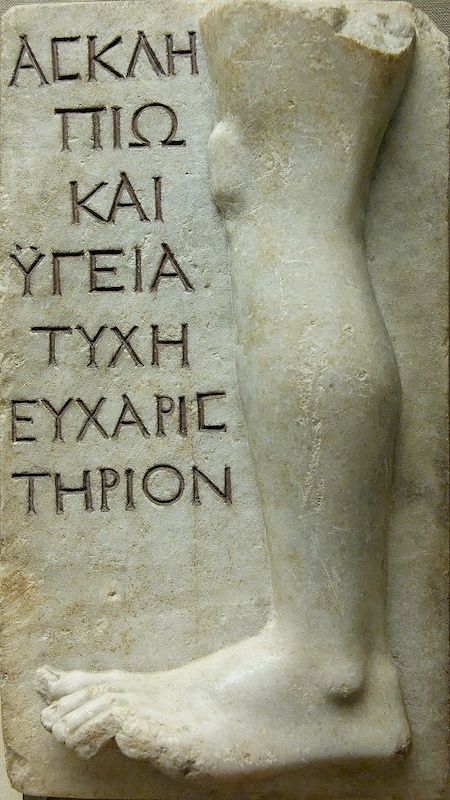
An ancient Greek relief sculpture featuring a lone ear may seem strange to us today, but it was actually created with the hopes that someone would be healed of an affliction related to their own ear.
The fourth-century relief, which is currently housed in the Acropolis Museum in Athens, was found near sanctuary of the god Asclepius, which was a healing sanctuary on the south slope of the Acropolis.
Asclepius, the son of the god Apollo according to Greek mythology, was an ancient Greek hero who was known as the god of medicine. Linked to snakes, his staff entwined with the reptiles is still commonly used as a symbol for medicine today.
The healing god was the father of five goddesses related to medicine and health — Hygieia, the goddess of health and cleanliness; Iaso, the goddess of recuperation; Aceso, the goddess of the healing process; Aegle, the goddess of good health and beauty; and Panacea, the goddess of universal remedies.
Ancient Greek relief of an ear made for healing purposes
Those who were suffering from illness and disease would make pilgrimages to temples of Asclepius. There were over 300 Asclepeia, or temples to the god, across the ancient Greek world. The most famous of all such healing temples is found at the ancient site of Epidaurus, which is also home to the renowned theater — which is still in use today.
The sick would often dedicate votive reliefs featuring an image of a body part that was afflicted to the healing god in order to find relief. Others, who had already been healed, would dedicate an image of their healed body part to the god as thanks.

There were even special sculpting workshops set up right near Asclepia around Greece so that those making the pilgrimage could have their relief sculpted by artisans just outside of the temple.
Archaeologists have found many reliefs featuring body parts, such as eyes, legs, ears, heads, and even genitals, near Asclepia. These remnants provide some insight into ancient maladies.
Some sanctuaries may have even had healing “specialties,” as there are some sites where only images of one specific body part, such as eyes, have been found.
This relief, which features a lone ear, also has a hole drilled into it from which it would be suspended on a wall or another part of the sanctuary.
Many of these images were hung around temples and sanctuaries to show pilgrims just how effective Asclepius was in healing the sick.
When visiting an Asclepeion, pilgrims would first make offerings and sacrifices to the god, and then they would sleep in the inner sanctuary, called the “abaton,” which was the holiest part of the temple.
Non-venomous snakes would freely crawl over their sleeping bodies, licking them along the way. It was believed that contact with the snakes, as well as being licked by the reptiles, would help cure the sick.
Snakes’ licks to the ears and eyes were also thought to bring about “second hearing” and “second sight,” or more highly-attuned versions of the senses.
After awakening, the patients would then report their dreams and symptoms to a physician at the temple, who would prescribe a remedy or treatment to ease their pain.
See all the latest news from Greece and the world at Greekreporter.com. Contact our newsroom to report an update or send your story, photos and videos. Follow GR on Google News and subscribe here to our daily email!



